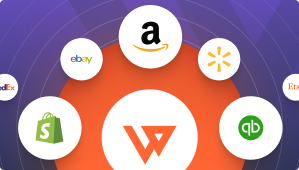The year 2020 has taught us many things. Strictly speaking from an ecommerce perspective, it certainly has emerged as a life savior for many, pandemic or not. The data, too, paints a positive picture:
One, by the year 2021, worldwide retail ecommerce sales will reach $4.9 trillion, according to Shopify.
Two, as per data from Disruptive Marketing, “80% of Americans have made an online purchase in the past month alone.”
Three, according to Statista, there are expected to be over 2B digital buyers in the world in 2020 i.e., a quarter of the world’s population.
In simple terms, it’s safe to assume that ecommerce is here to stay. To that end, it makes sense to understand the top three trends that are going to dominate the ecommerce universe in 2020.
The Sounding Board of Interactive Deals: Voice Commerce
If you think voice commerce is only finding its footing, think again. As per research by ComScore, “In 2020, more than half of all smartphone users will engage with voice technology on their device.” Plus, Gartner predicts that “30% of all browsing sessions will include voice search by 2020.”
That’s not all. Further research suggests that “Voice shopping is expected to grow to 40 billion by 2022.”
Clearly, voice technology is gaining traction and becoming more mainstream as time passes by. In terms of the benefits, here are the top benefits of using voice commerce in your existing sales strategy:
- It allows brands to deliver seamless and convenient customer service to users as all the latter has to do is use a simple voice command.
- It frees up time for human agents to work on solving other critical issues or cater to customer queries, which a chatbot cannot handle.
Here’s an interesting real-life example of a brand that is leveraging voice commerce to its advantage.
In 2014, Domino’s launched its own voice recognition app, “DOM” to take phone orders for customers and help them check their order status using an incoming phone number to identify the specific order. With regards to this innovation, this is what J. Patrick Doyle, CEO, and president of Domino’s had to say:
“We believe natural voice recognition is the future, as seen by the rise in virtual assistants, such as Amazon’s Alexa and Google Home. More importantly, artificial intelligence provides great learning platforms that will enable us to do more to deliver convenience for our customers and better job experiences for our team members.”
Key takeaway: Voice commerce offers users ultra-convenience due to its “hands-free” approach where users can place orders and ask questions by simply asking questions in an instant manner and, above all, in real-time.
Virtual Shopping Assistants for the Win
“The same way chat-bots are becoming more intuitive, so do I think that personal shopping assistant bots online will become more prevalent, using previous data to help anticipate new products that you’ll like. Similar to Amazon’s suggestions for similar products.” – Duran Inci, CEO of Optimum7
Alexa. Siri. Google Assistant.
Let’s face it. We’ve all interacted with either one of these voice assistants at some point or another in our lives. And that, by itself, speaks to the ubiquity of virtual shopping assistants. These agents are taking the ecommerce world by a storm as well by offering a host of useful services.
Take, for instance, Estee Lauder’s voice-activated skincare expert, Liv, which offers information pertaining to product-related suggestions or basic customer queries:
Additionally, AI-enabled chatbots can assist users in their shopping journey while they’re browsing products on websites/apps.
Fun Fact: In 2017, Burger King launched a 15-second television spot to highlight Google’s voice search technology. The ad included an actor saying out loud: “OK, Google, what is the Whopper burger?” Surprisingly, Google Home devices across the audience’s homes lit up and started answering the question – unable to differentiate between the television voice and the user’s voice. Ingenious, right?
- Here’s another example of the KIK bot – Sephora’s virtual shopping assistant:
Social Proof Will Become an Ecommerce Staple
Even though most customers admit to not writing reviews and feedback, a staggering 91% of customers claim that they made a recent purchase based largely on reviews according to this study.
It goes with saying that there are many factors that work in favor of using “social proof” for ecommerce marketing. For example, it allows users to connect with brands on a more personal and connected manner. More importantly, it helps brands to build a community of like-minded people around their products/services.
Luckily, there’s much you can do with the idea of social proofing your offering – From social media likes and reviews to user-generated content and testimonials, the length and breadth of social proof turf (for lack of a better term) is quite vast and effective. Let’s look at some ecommerce brands that are leading this trend and shaping the way to a more authentic and transparent way of shopping by allowing users to contribute and comment in equal measure:
- Beauty brand Glossier uses user-generated content across its social media accounts, especially Instagram, which believe it or not, actually accounts for 70% of the company’s growth:
- BarkBox’s website effectively showcases user reviews and pictures of real dogs the brand has serviced to gain user trust and loyalty:
“By the year 2040, as much as 95% of shopping will be facilitated by ecommerce.” – Nasdaq
Sebastian Siemiatkowski, CEO of Klarna, a global ecommerce payment provider, rightly says: “Experience is the new loyalty.” And as counterintuitive as it may seem, technology will play a big part in ensuring that customers feel at home – especially when interacting with brands at the touch of a button, at the sound of a command, and when commenting on experiences using intuitive digital technology such as chatbots, live chat, voice agents, social media, you name it.
About the Author — Dhruv Mehta is a Digital Marketing Professional who works at Acquire and provides solutions in the digital era. In free time, he loves to write on tech & marketing. He is a frequent contributor to Tweak Your Biz. Connect with him on Twitter or LinkedIn.



 The Webgility Team
The Webgility Team


